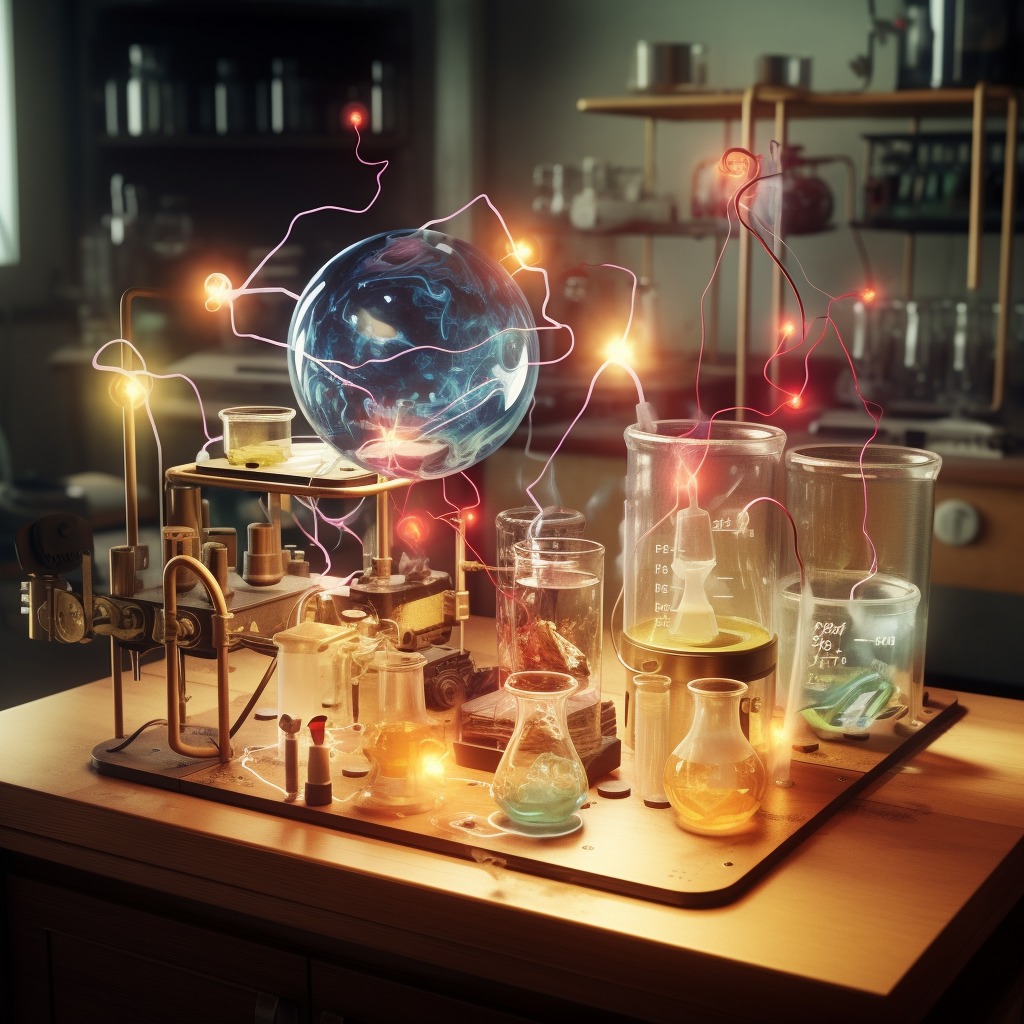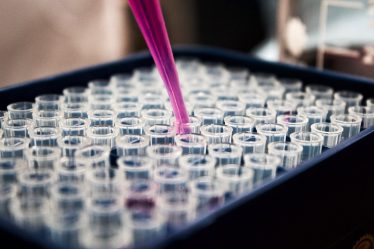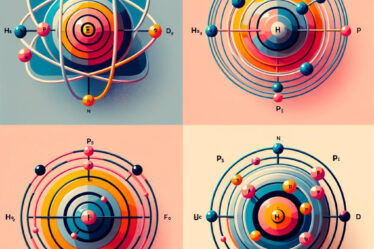
Electrochemistry is a fascinating field that bridges the gap between chemistry and physics, focusing on the interactions between electrical energy and chemical reactions. This subject is not just academic; it has practical applications that touch our daily lives in myriad ways, from powering our smartphones to treating wastewater.
Discover your ideal chemistry tutor at meet’n’learn and skyrocket your understanding to new heights!
Introduction to The Science of Electrochemistry: From Basics to Real-World Applications
Welcome to this all-encompassing guide on electrochemistry, a field that bridges the gap between chemistry and physics by exploring how chemical reactions can produce or consume electrical energy. This article is designed to serve a broad audience, including students who are navigating the complexities of redox reactions, teachers aiming to impart a deep understanding of electrochemistry, tutors who specialize in science education, and chemistry aficionados looking to expand their knowledge.
Our journey begins with an in-depth look at electrochemistry and why it’s a cornerstone in modern scientific research. We’ll explore its critical role in energy storage, medical diagnostics, and environmental conservation sectors. Following this, we’ll break down the essential components of redox reactions, the heart of electrochemical processes. You’ll learn about galvanic and electrolytic cells, the two primary types of electrochemical cells, and how they function in various real-world applications.
Additionally, we’ll discuss the importance of private tutoring in mastering electrochemistry, offering insights into how personalized education can make a significant difference in your learning journey.
By the time you finish reading, you’ll have a robust understanding of the fundamentals and appreciate the far-reaching implications of electrochemistry in shaping the future of science.
Introduction to Redox Reactions.
Section 1: What is Electrochemistry? Its Definition and Role in Modern Science
What Exactly is Electrochemistry?
Electrochemistry is the branch of science that studies the relationship between electrical energy and chemical reactions. It involves processes where electrons are transferred between substances, leading to a variety of applications and phenomena.
Electrochemistry is not just about reactions in a lab; it’s a field that has practical implications in everything from the batteries that power our smartphones to the medical devices that monitor our health. Understanding electrochemistry means understanding the mechanisms that make these everyday conveniences possible.
Why Electrochemistry is a Pillar in Contemporary Science
Electrochemistry is far from a niche subject; it’s a critical pillar in modern scientific research and technological development. In the energy storage realm , electrochemistry is the driving force behind the batteries that power electric vehicles and renewable energy systems. It’s the reason we have efficient and long-lasting power sources.
When it comes to medicine, electrochemical techniques play a vital role in drug delivery systems and the development of biosensors, which are crucial for diagnosing and monitoring various health conditions. These methods offer high sensitivity and specificity, making them invaluable medical research and treatment tools.
Moreover, in environmental science, electrochemical technologies are increasingly being used for water purification and waste treatment. They offer sustainable solutions for tackling pollution and ensuring that our natural resources are conserved for future generations.
From these examples, it’s clear that electrochemistry is not just an academic subject but a field with real-world impact, shaping the future of multiple industries and improving the quality of life.
The basic of Polymers.
Section 2: The Basics of Redox Reactions
Understanding Oxidation and Reduction: The Pillars of Redox Chemistry
In the realm of electrochemistry, redox reactions are fundamental. The term “redox” is a contraction of “reduction-oxidation,” which describes the exchange of electrons between substances. In a redox reaction, one element gains electrons (reduction) while another loses electrons (oxidation).
Formula for Oxidation: A → A+n + n e–
Formula for Reduction: B + n e– → B-n
Combined Redox Reaction: A + B → A+n + B-n
Real-World Examples and the Importance of Redox Reactions
Redox reactions are ubiquitous in daily life and industrial processes. For instance, the rusting of iron is a redox reaction between iron and oxygen. In biological systems, redox reactions are crucial for cellular respiration.
Sample Reactions:
- Methane + Oxygen ⟶ Acetylene + Carbon Monoxide + Hydrogen
- Chromium(III) Oxide + Aluminum ⟶ Chromium + Aluminum Oxide
Step-by-Step Guide to Balancing Redox Reactions
Balancing redox reactions is essential for understanding the stoichiometry of a reaction. The process involves balancing the atoms and charges on both sides of the equation.
Simple Steps to Balance a Redox Reaction:
- Identify the oxidation and reduction half-reactions.
- Balance the atoms other than O and H in each half-reaction.
- Balance the O atoms by adding H2O.
- Balance the H atoms by adding H+.
- Balance the charges by adding electrons.
- Combine the half-reactions.
Introduction to the Periodic Table and how to memorize it.
What is Viscosity and How to Calculate It?
Avoid These Common Mistakes in Redox Balancing
- Ignoring Charges: Always consider the charges when balancing redox reactions.
- Incorrect Coefficients: Ensure that the coefficients are the smallest whole numbers that balance the equation.
- Overlooking Electron Transfer: The number of electrons lost in oxidation must equal the number gained in reduction.
Example: Balancing the reaction between Hydrogen and Oxygen to form water.
– Oxidation: H2 → 2H+ + 2e–
– Reduction: O2 + 4e– → 2O2-
– Combined: H2 + O2 → H2O
By adhering to these guidelines and understanding the underlying principles, mastering redox reactions becomes a much more attainable goal.
What are Functional Groups in organic chemistry?
Section 3: Understanding Electrochemical Cells
Unlocking the Secrets of Galvanic Cells
Galvanic cells, also known as voltaic cells, are electrochemical cells that generate electrical energy from spontaneous redox reactions. They consist of two different metal electrodes submerged in electrolyte solutions.
Essential Components of Galvanic Cells:
- Anode: The electrode where oxidation occurs.
- Cathode: The electrode where reduction occurs.
- Electrolyte: The medium that provides the ions for the reaction.
- Salt Bridge: Connects the two half-cells and allows ion flow.
Mastering the Standard Galvanic Cell Equation: Zn + Cu2+ → Zn2+ + Cu
What are Hydroxides?
Real-World Uses of Galvanic Cells
Galvanic cells have various applications, including batteries, corrosion prevention, and metal plating. For example, alkaline batteries are a type of galvanic cell.
How is a Covalent Bond Formed, and how can we differentiate between Ionic and Covalent Bonds?
Demystifying Electrolytic Cells
Unlike galvanic cells, electrolytic cells consume electrical energy to drive a non-spontaneous redox reaction. They are used in processes like electroplating and electrolysis of water.
Core Components of Electrolytic Cells:
- Anode: The electrode where oxidation occurs.
- Cathode: The electrode where reduction occurs.
- Power Source: Provides the electrical energy for the reaction.
Understanding the Electrolysis of Water Equation: 2H2O → 2H2 + O2
Practical Applications and Limitations of Electrolytic Cells
Electrolytic cells are widely used in industries for processes like aluminum extraction and water treatment. However, they are energy-intensive and may require special conditions like high temperature and pressure.
How is a Hydrogen Bond Formed?
Comparative Analysis: Galvanic vs Electrolytic Cells
While both types of cells involve redox reactions, the key difference lies in the reaction’s spontaneity and the flow of electrical energy. Galvanic cells generate electricity, whereas electrolytic cells consume it.
Key Differences You Need to Know:
- Direction of Energy Flow: Galvanic cells produce energy, while electrolytic cells consume it.
- Spontaneity Factor: Reactions in galvanic cells are spontaneous, while those in electrolytic cells are not.
- Real-World Applications: Galvanic cells are commonly used in batteries, while electrolytic cells are used in industrial processes.
| Feature | Galvanic Cells | Electrolytic Cells |
|---|---|---|
| Energy Conversion | Chemical to Electrical | Electrical to Chemical |
| Spontaneity of Reaction | Spontaneous | Non-spontaneous |
| Common Uses | Batteries | Electroplating, Electrolysis |
| Electrode Polarity | Anode is Negative | Anode is Positive |
Explore Acids, Bases, and pH.
Section 4: Real-World Applications of Electrochemistry – Batteries and Corrosion Prevention
Unlocking Energy Storage: Types of Batteries
Batteries are ubiquitous daily, powering everything from remote controls to electric cars. They work on the principle of electrochemical reactions, where chemical energy is converted into electrical energy. The most common types of batteries include alkaline, lithium-ion, and nickel-cadmium, each with advantages and disadvantages.
Alkaline batteries are often used in household items like flashlights and toys. They are known for their long shelf life and are generally non-rechargeable. Lithium-ion batteries, on the other hand, are rechargeable and commonly used in smartphones and laptops. They offer high energy density but require careful handling due to their sensitivity to temperature changes. Nickel-cadmium batteries are less common but are known for their durability and are often used in industrial settings.
Ethanol and Alcohols in Chemistry explained.
Fighting Corrosion: How Electrochemistry Protects Metals
Corrosion is the degradation of metals due to their reaction with environmental factors like moisture and oxygen. It’s a significant concern in the construction, automotive, and marine engineering industries. Electrochemistry offers solutions to prevent or slow down corrosion, including cathodic protection.
This technique uses a sacrificial anode, often made of a more reactive metal like zinc, to divert the corrosive process away from the metal structure it’s protecting. By doing so, the sacrificial anode corrodes instead of the protected metal, thus extending the lifespan of structures like pipelines, ships, and underground storage tanks. Another method is the application of anti-corrosive coatings that act as a physical barrier between the metal and the corrosive environment.
How to calculate Molar Mass and Mass Fraction?
Section 5: The Role of Private Tutoring in Mastering Electrochemistry
Why Education in Electrochemistry Matters
Electrochemistry is a complex field that intersects with various scientific disciplines, including chemistry, physics, and environmental science. Understanding its principles is crucial for anyone pursuing a career in these areas. However, the subject can be challenging to grasp through self-study or traditional classroom settings alone.
That’s where private tutoring comes in. A personalized educational experience can significantly affect how well a student understands electrochemistry. Tutors can tailor their teaching methods to suit the individual learning styles of their students, making complex topics more accessible.
How to calculate the Concentration of a Solution?
How Tutors Can Make a Difference
Private tutors offer a one-on-one learning environment for immediate feedback and personalized attention. This setting is particularly beneficial for complex subjects like electrochemistry, where students may need extra help understanding redox reactions, electrochemical cells, and other intricate topics.
Tutors can provide real-world examples, interactive exercises, and even laboratory demonstrations to make the subject more relatable and easily understood. They can also identify gaps in a student’s knowledge and focus on those areas, making the learning process more efficient.
Benefits of Personalized Tutoring in Chemistry
One of the most significant advantages of private tutoring is its flexibility. Students can schedule sessions at their convenience, allowing them to balance their academic commitments with other responsibilities. This flexibility is especially beneficial for adult learners or those with irregular schedules.
Moreover, personalized tutoring can boost students’ confidence, providing them with the skills and knowledge they need to excel academically or professionally. The focused attention and customized teaching methods can turn a challenging subject like electrochemistry into an exciting and manageable one.
Looking for a chemistry tutor? Enter “chemistry tutor Glasgow” or “chemistry teacher Sheffield” on your preferred tutoring platform, such as meet’n’learn to find a teacher who can meet your specific needs.
If you thrive in group learning environments, search “chemistry classes London” or “chemistry lessons Manchester” online to discover local schools offering chemistry lessons.
What is The Future of Electrochemistry
Electrochemistry is a dynamic field with applications that touch various aspects of our lives, from energy storage to medical diagnostics. Whether you’re a student, teacher, or enthusiast, diving deeper into this subject can offer valuable insights. Consider private tutoring for a more personalized learning experience. The future of electrochemistry promises even more exciting developments, making now the perfect time to get involved.
Discover your ideal chemistry tutor at meet’n’learn and skyrocket your understanding to new heights!
FAQ: Frequently Asked Questions About Electrochemistry
1. What is Electrochemistry?
Electrochemistry is the study of chemical reactions involving the transfer of electrons.
2. How Do Redox Reactions Work?
Redox reactions involve the transfer of electrons from one molecule to another, typically involving an oxidizing agent and a reducing agent.
3. What’s the Difference Between Galvanic and Electrolytic Cells?
Galvanic cells generate electrical energy from chemical reactions, while electrolytic cells use electrical energy to drive a chemical reaction.
4. How Does Electrochemistry Relate to Everyday Life?
Electrochemistry plays a role in everyday applications like batteries, corrosion prevention, and medical devices.
5. What Are Some Future Trends in Electrochemistry?
Future trends include advancements in fuel cells, bioelectrochemistry, and sustainable energy solutions.
Struggling with biology topics? Explore our extensive collection of biology educational blog posts designed to simplify complex concepts for you. Whether it’s photosynthesis, the intricacies of green algae, understanding bacteria and viruses, or delving into the fascinating world of genetics and cells, our resources have got you covered. Expand your knowledge and enhance your learning journey with us today.


